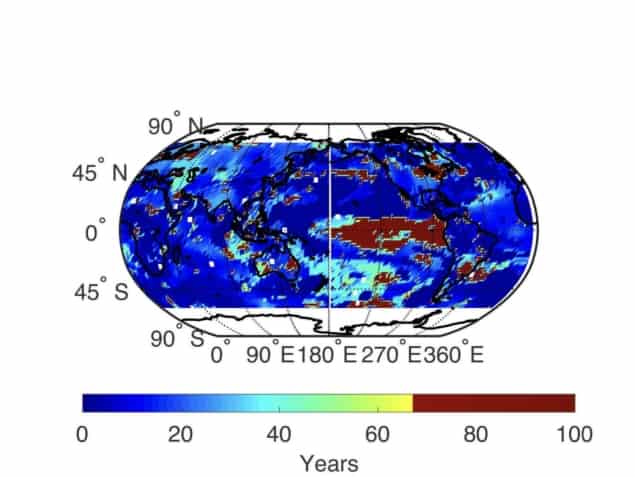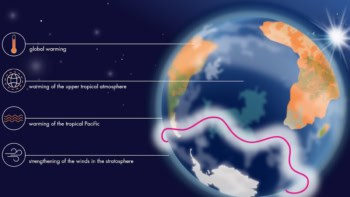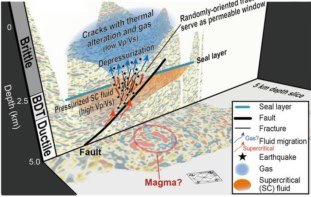
Climate data from the last century and paleoclimate information from the last 100,000 years both exhibit pink noise, according to a team from the US, Sweden and the UK. The finding indicates that the pink noise is a feature of natural climate variability.
Pink noise is random, with every octave containing the same amount of energy; it also occurs in earthquakes, stellar luminosity and electronics. Pink noise has more low-frequency components than white noise and gets its name as visible light with that energy spectrum would appear pink.
“We find that the observed pink noise behaviour is intrinsic to Earth’s climate dynamics, which suggests a range of possible implications, perhaps the most important of which are ‘resonances’ in which processes couple and amplify warming,” says John Wettlaufer of Yale University, US. “A central question in contemporary climate science concerns the relative roles of natural climate variability and anthropogenic forcing – climate change related to human involvement – which interact in a highly nonlinear manner on multiple timescales, many of which transcend a typical human lifetime.”
The pink noise could resonate with low-frequency forcing such as that from manmade effects, Wettlaufer and colleagues believe.
Their analysis revealed that the timescale at which pink noise appears in the climate signal depends on geographic location. The noise may arise because of Earth’s rotation – the team will continue to investigate the mechanism.
Wettlaufer and colleagues from Yale, the University of Oxford and Stockholm University analysed monthly-averaged surface temperatures from 1901 to 2012 provided by the Goddard Institute for Space Studies, US, along with data from climate proxies such as isotope measurements in ice cores and cave formation dating back more than 100,000 years. Both the pre-industrial and post-industrial data showed fluctuations in temperature that could be described as pink noise.
The team reported the findings in Physical Review Letters.
- This article is based on a press release from Yale University.



